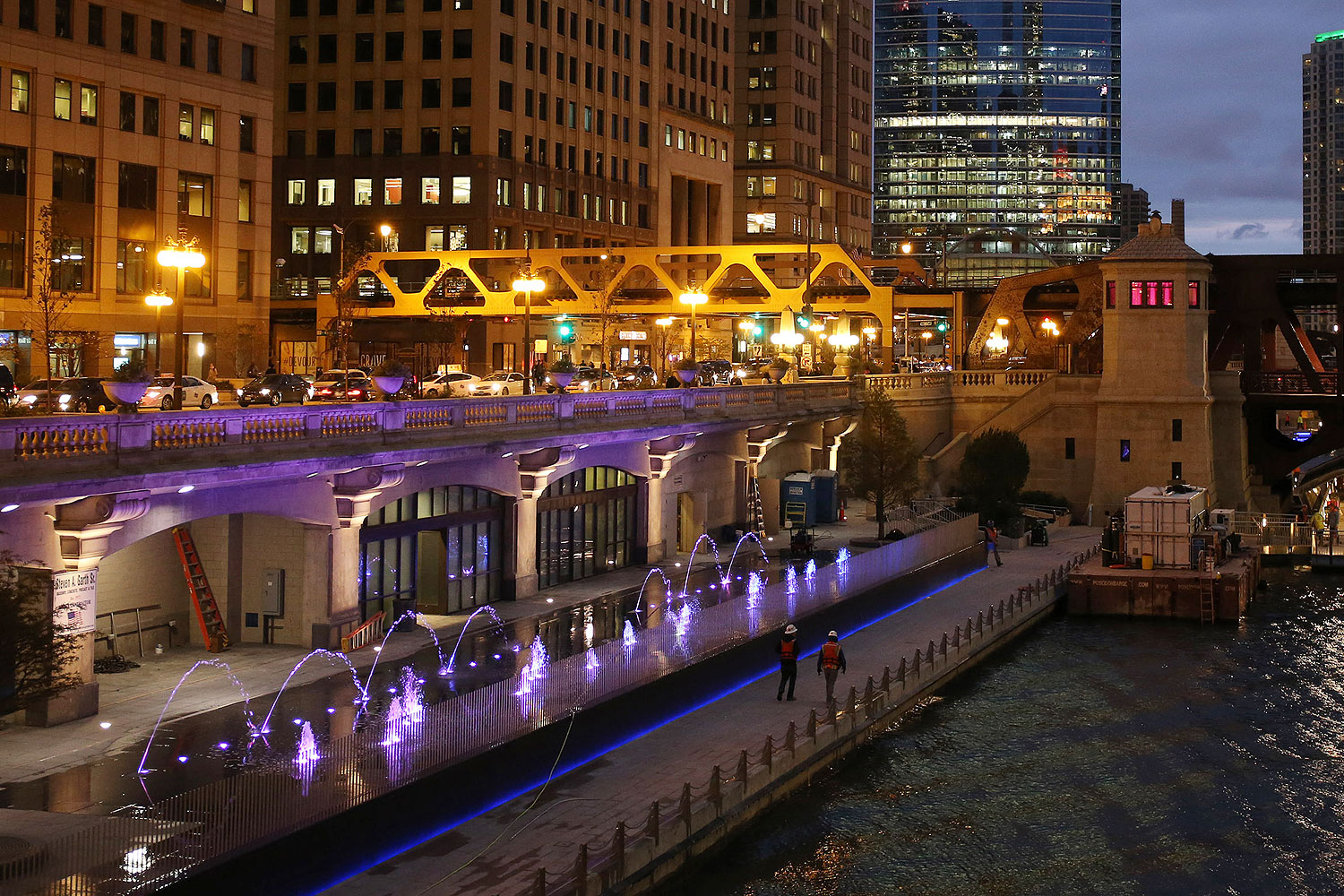One of the biggest stories in the city in the past few years, and an explicit goal of the Emanuel administration, has been accelerating the transformation of the Chicago River from an industrial corridor into an urban amenity. There's the Riverwalk; the boathouses; the North Branch Trail extension; the planned Paseo in Pilsen; and even a seemingly wild idea for a 6.5 mile floating bike path from Chinatown to Ravenswood Manor.
The idea that the long-fetid river could become an urban amenity is occasionally greeted with some skepticism, but there's a logic to it, and a new working paper from the Chicago Fed provides some interesting new evidence. The authors, Nathaniel Baum-Snow of the University of Toronto and Daniel Hart of the Chicago Fed, set out to explain familiar changes in urban central business districts: "Downtown neighborhoods have been the most rapidly gentrifying regions of metropolitan areas during the 2000-2010 period."
That's been a well-observed trend in Chicago and elsewhere. And so has this: "Greater
increases in amenity valuations after 2000 relative to prior decades encouraged college-educated whites to move in."
But what is an "amenity"? Is a river an amenity? Actually, yes: the study factors in the distances to "natural amenities including coastlines, lakes and rivers… given evidence in Lee & Lin (2014) that they anchor affluent neighborhoods."
Those authors, Sanghoon Lee and Jeffrey Lin, looked at oceans, lakes, rivers, and hills. And their strongest finding was that proximity to a coastline—including a Great Lake—made those neighborhoods more stable, and vice versa:
In other words, neighborhood incomes tend to fluctuate less over time in a city such as Los Angeles, with its beaches, hills, and valleys, than in a city such as Dallas, which more closely resembles a flat, featureless plain. Intuitively, a shock to a neighborhood’s amenity value—because of idiosyncratic migration, effects of policy, natural disasters, etc.—has the potential to change the historical distribution of income across neighborhoods. But in cities where some neighborhoods have overwhelming natural advantages, small shocks or interventions are unlikely to undo history.
Our final main result is that the anchoring effect of superior natural amenities is stronger in a city with dominant natural features. Relying on the fact that many U.S. central cities were founded near superior natural amenities, we show that downtowns in coastal cities, compared with downtowns in interior cities, declined less in income in the early and mid-20th century and improved more in income after 1980. In short, coastal city downtowns have been better anchored to high incomes during periods of both nationwide suburbanization and gentrification.
It's not a silver bullet—Detroit and Cleveland are both "coastal" cities by their measurement—but it helps. A river, on the other hand, varies. They find that "on average, rivers in our sample are a disamenity for households," but that where a river is a positive amenity, it has similar effects, a lesson Chicago is learning from other cities.
That rivers are on average disamenities suggests, as an architect told me when Chicago was just beginning the riverwalk, that they're untapped potential. Cities grew up around them because they were a necessity. Now that we no longer need them in the same way, we're discovering that we want them.



